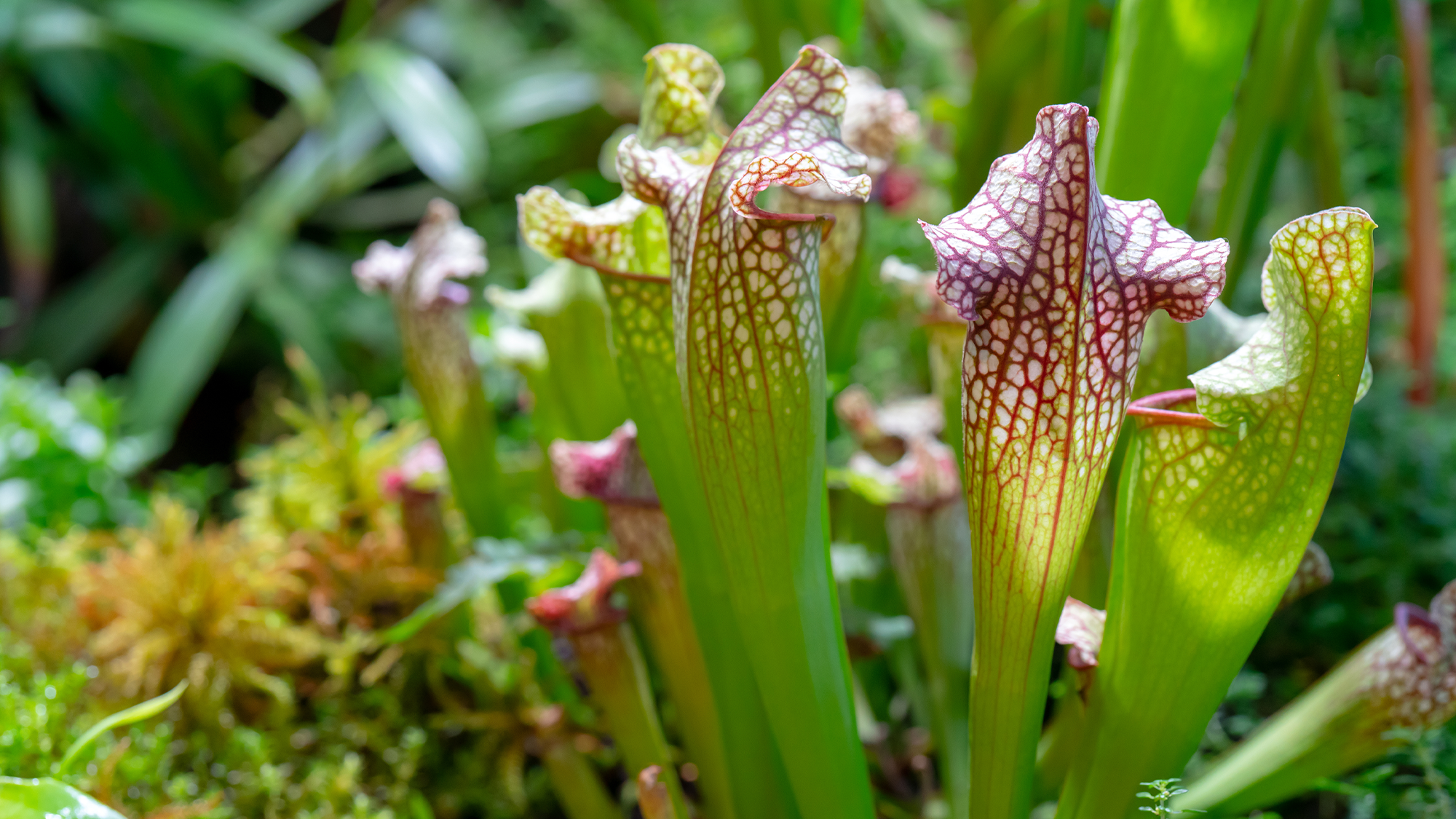

Carnivorous plants come in a variety of shapes and colors—and it’s often their looks that help them attract their prey. However, these floral tricksters may use a different scene to attract their dinner: smell. A small study published this month in the journal PLOS One found evidence that different species of Sarracenia, a genus of North American pitcher plant, produces scents that are directed at certain groups of prey.
[Related: Two newly discovered Andes Mountain plant species have an appetite for insects.]
Sarracenia pitcher plants typically make their home in bogs and in poor soil throughout North America. Their signature purple or reddish flowers are actually leaves which form a cup called the “pitcher” filled with digestive enzymes. If an insect gets too close to the plant, the pitcher traps it and digests the insect to help supplement their diet in a nutrient-poor home.
The odor of carnivorous plants hasn’t been well-studied by humans, but has been suspected for over a century. Charles Darwin wrote about the unique plants about 150 years ago, but it’s been more difficult to find concrete evidence of its olfactory mechanisms.
“Of the signals involved in communication, odor is probably the most cryptic to humans,’ co-author and carnivorous plant expert French National Centre for Scientific Research Laurence Gaume said in a statement. “In plants, it is often correlated with other plant characteristics such as nectar, shape and visual signals, which make it difficult to disentangle its effect from others.”
In this new study, a team identified the odor molecules emanating from four types of pitcher plants. The scents appear to correlate with the types of incense that wound up inside of the pitchers. The chemicals that make up some of the scents are similar to ones known to act as signals to certain insects, which may mean the pitcher plants have evolved to take advantage of their prey’s senses.
“It offers potentially interesting avenues in the field of biological control, and one can imagine drawing inspiration from the olfactory cues of these pitcher plants to control plant pests, for example,” said Gaume.
The team grew Sarracenia purpurea and three of its hybrids with other pitcher plants in a lab.
They found that all of the pitchers produced a scent that was similar to more generalist plants that are pollinated by many different species. This can allow them to cast a wide net for prey, but they noted that there were subtle differences in the volatile organic compounds that they produced.
[Related: Dying plants are ‘screaming’ at you.]
The pitchers attracting butterflies and bees were rich in compounds like limonene, a chemical that gives citrus fruits their unique smell. The aroma comes from a class of chemicals found in the scents of around two thirds of flowering plants which attract these pollinators.
Meanwhile, S. purpurea also had an odor that was high in fatty acid chemicals known to attract parasitoid wasps and possibly other insect predators. Wasps and insects made up a large part of the plant’s diet, which suggests that the scent could be targeting them directly.
The team found that both the odor of a pitcher and its dimensions could help predict the prey caught by a plant about 98 percent of the time. This is not definitive proof, but it suggests a possible link between a pitcher plant’s scent and its prey.
Since carnivorous plants cannot move to hunt for their prey like a lion or a shark, smells can help them not only find food, but communicate with other plants. Plants being eaten can release scents that tell other plants nearby to get their defenses ready or produce a smell that attracts predators.
Plants that are pollinated by animals often rely on scents to attract pollinators, like bees. Anything that hides their scent–like air pollution–can cause a drop in the number of pollinators that can find them.
Further studies could help explain how carnivorous plants that are pollinated by insects can attract some for pollination and other for food. For example, the most important pollinators of Venus fly traps are never found inside its traps, and scent could play a role in this.
“However, we remain cautious because our results are currently based on correlations. Even with strong correlations, further tests are necessary to investigate whether the different insect types are indeed attracted to particular scents,” said Gaume.
